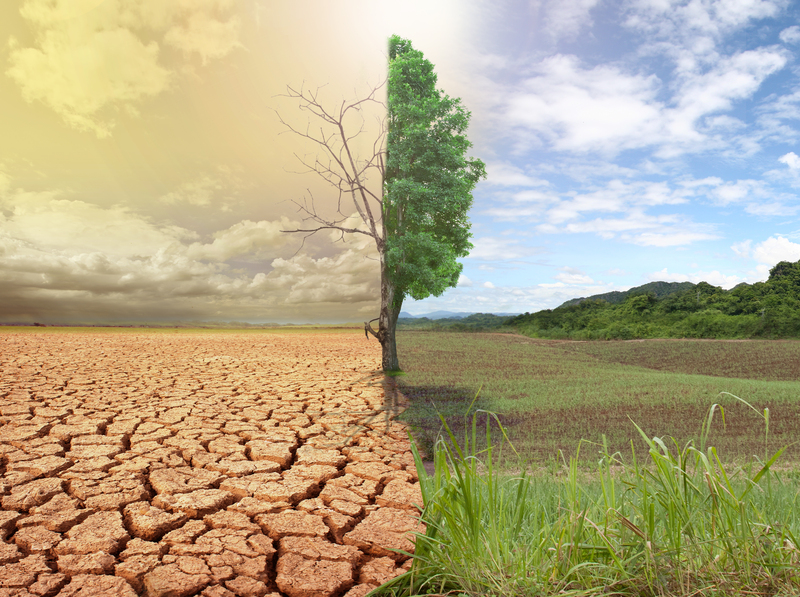Steps to Dispose of Your PPE Responsibly Every Time
As the world continues to face health risks and environmental challenges, the proper disposal of Personal Protective Equipment (PPE) has emerged as a critical step in safeguarding communities and ecosystems. PPE such as masks, gloves, face shields, and gowns are essential for protecting individuals from contaminants, but when discarded improperly, they can cause significant environmental problems. In this comprehensive article, we walk you through responsible PPE disposal every time, addressing why it matters, the best practices, and actionable steps everyone should follow.

Why Responsible PPE Disposal Is Essential
Before diving into specific steps, it's vital to understand the importance of responsible PPE disposal. PPE waste is primarily composed of synthetic plastics such as polypropylene and latex, which are not biodegradable. When thrown away carelessly:
- Environmental Pollution: Masks and gloves can end up in waterways and forests, endangering wildlife and contributing to microplastic pollution.
- Health Hazards: Discarded PPE can harbor viruses and bacteria, putting sanitation workers and the public at risk of contamination and infection.
- Inefficient Waste Management: When PPE is mixed with recyclable or compostable materials, it contaminates the recycling stream and complicates waste management processes.
- Legal Implications: Many municipalities have regulations regarding medical and hazardous waste, and improper disposal could lead to penalties.
With these risks in mind, responsible disposal of PPE is a social responsibility that everyone should undertake. Below are actionable steps for effective PPE disposal, ensuring public safety and environmental health.
Step 1: Identify and Sort Your PPE
Not all PPE is the same. Knowing the different types helps you determine the correct disposal method. PPE items commonly used include:
- Disposable Face Masks: Typically made from non-woven synthetic fibers.
- Surgical or Nitrile Gloves: Latex or synthetic rubber materials.
- Face Shields: Plastic visors often attached to headbands.
- Protective Gowns: Usually made from layers of plastic or fabric.
- Reusable Fabric Masks: Cloth masks with multiple use cycles.
How does sorting help? When you separate used PPE from regular trash and recyclables, you prevent the spread of germs and reduce the risk of contaminating recycling facilities.
Quick Guide to Sorting PPE:
- Disposable Masks & Gloves: Place in a designated PPE or hazardous waste bag.
- Reusable PPE: Set apart in a washable container; do not place with single-use items.
- Damaged PPE: Treat as hazardous waste, even if it's reusable.
Step 2: Use Designated Disposal Bins
Using the correct bin is essential for making sure your PPE doesn't harm others or the planet. Many organizations, workplaces, and even public spaces now provide dedicated PPE disposal bins.
- Label Your Bin: If at home or work, create a clearly marked bin solely for used PPE.
- Seal and Line the Bin: Always use a strong plastic bag to line the bin and replace it frequently to avoid overflow and contact with infectious waste.
- Keep Hands Clean: After disposing of PPE, always wash or sanitize your hands thoroughly.
Step 3: Remove PPE Safely and Hygienically
Improper removal of PPE can lead to cross-contamination. Follow these steps for safe handling every single time:
- Do Not Touch Contaminated Surfaces: Always remove PPE from the designated straps or edges, avoiding the surface that may have been exposed to germ particles.
- Dispose Immediately: Place the item directly into the assigned PPE bin to reduce the risk of spreading contaminants onto surfaces.
- Practice Hand Hygiene: After disposal, use soap and water or an alcohol-based sanitizer to eliminate any residual germs.
Step 4: Securely Bag and Seal Your PPE Waste
To guarantee the safe disposal of PPE, it is crucial to securely bag your waste. Here's how you can do it:
- Double Bag When Possible: Place used PPE in one bag, then put this inside another bag before sealing. This extra layer helps safeguard sanitation workers.
- Knot or Tie Securely: Ensure bags are tightly sealed to prevent spillage or accidental exposure during collection.
- Avoid Overfilling Bags: It's better to use more bags than risk breakage that could release hazardous material.
Step 5: Follow Local Guidelines for PPE Waste Disposal
Many cities and municipalities have introduced new rules tailored for PPE waste management. To ensure you're compliant and responsible:
- Check Local Authority Websites: They often provide up-to-date instructions for disposing PPE safely.
- Do Not Recycle PPE: Unless specifically permitted, single-use PPE should not be placed in standard recycling bins as it contaminates recyclable material.
- Special Collection Drives: Some regions organize PPE collection campaigns or provide drop-off points - take advantage of these for large volumes.
- Medical Waste Classification: If you're disposing of PPE from healthcare environments, follow medical waste protocols for incineration or secure landfill disposal.
What if There Are No PPE-Specific Guidelines?
If you cannot find any specific local rules, treat used PPE as general waste but take precautions by double-bagging and labeling the material as "PPE" or "potentially contaminated".
Step 6: Reduce and Reuse PPE Where Safe
Reducing the volume of PPE waste you generate is just as important as disposing of it properly. Here's what you can do to lessen your impact:
- Use Reusable PPE: Opt for washable masks and gowns where safety guidelines allow. Ensure they're cleaned according to the manufacturer's instructions after each use.
- Follow Proper Care: Maintain and disinfect reusable equipment to prolong its lifespan, reducing the need for frequent replacement.
- Only Use What's Needed: Don't overuse PPE; assess your risk and follow official guidance to avoid unnecessary waste.
Step 7: Educate Others and Spread PPE Disposal Awareness
The process does not end with your personal actions. Responsible PPE disposal should be a community effort. Here's how you can advocate for a safer, cleaner environment:
- Share Knowledge: Inform friends, family, and coworkers about the dangers of improper PPE disposal and best practices to follow.
- Encourage Proper Habits: Suggest the establishment of dedicated bins in your workplace, school, or local area.
- Lead by Example: Always dispose of your PPE responsibly to inspire others to do the same.
- Support Community Initiatives: Participate in or organize PPE clean-up drives to help remove discarded items from public areas.
The Serious Consequences of Improper PPE Waste Management
To underscore the importance of safe PPE disposal, consider these risks of negligent behavior:
- Wildlife Endangerment: Animals can ingest or become entangled in discarded gloves and masks.
- Soil and Water Pollution: Microplastics from PPE degrade slowly, contaminating natural resources for years.
- Spread of Disease: Improperly discarded PPE can expose others to pathogens, fueling the transmission of infections such as COVID-19 or influenza.
- Public Nuisance: Littered PPE diminishes community aesthetics and can block drainage systems, leading to flooding or health code violations.
By following the outlined responsible PPE disposal steps, you not only protect your loved ones and neighbors, but also play a crucial role in global environmental preservation.
Future Trends and Innovations in PPE Waste Management
In response to the surge in global PPE waste, innovative solutions are emerging:
- Biodegradable PPE: Researchers are developing masks, gloves, and gowns made from compostable materials to reduce plastic pollution.
- PPE Recycling Programs: Pilot projects in some countries now offer closed-loop recycling for certain types of PPE, especially plastics.
- Smart Bins: High-traffic areas may soon utilize sensor-equipped bins to ensure correct PPE disposal with minimal risk to workers.
Being proactive in how you dispose of your PPE encourages these technological solutions and signals to manufacturers and governments that consumers value environmentally responsible policies.

Summary: Make Responsible PPE Disposal Part of Your Routine
- Know your PPE and sort it separately.
- Locate or set up a dedicated PPE disposal bin.
- Remove and bag PPE carefully.
- Follow local guidelines for hazardous and medical waste.
- Minimize usage and choose reusables when feasible.
- Educate your circle and advocate for responsible disposal.
Responsible PPE Disposal: A Habit for the Greater Good
The key to responsible PPE disposal lies in forming lasting habits and inspiring your community to do the same. By staying informed and attentive, you contribute to a healthier population and a cleaner world.
For more tips on PPE disposal and environmental health, refer to your local waste management resources and stay updated on sustainable PPE solutions. Together, we can make a difference with every PPE item we dispose of, every time.
Frequently Asked Questions About PPE Disposal
-
What is the safest way to dispose of a used face mask?
Place the mask in a sealed bag, then discard it in a dedicated PPE or general waste bin. Always sanitize your hands afterward. -
Can I recycle single-use PPE items?
Most single-use PPE items are not recyclable and should not be placed with regular recyclables unless your local facility allows it. -
Are there alternatives to disposable PPE?
Yes, opt for reusable and washable masks, face shields, and gowns wherever permitted to minimize waste. -
Why shouldn't I throw PPE on the street?
Littering PPE is both an environmental and health risk, as it contributes to pollution and may harbor infectious agents.
By integrating these steps into your daily routine, you ensure safe and responsible PPE disposal every time, making a meaningful impact on public health and our planet.
